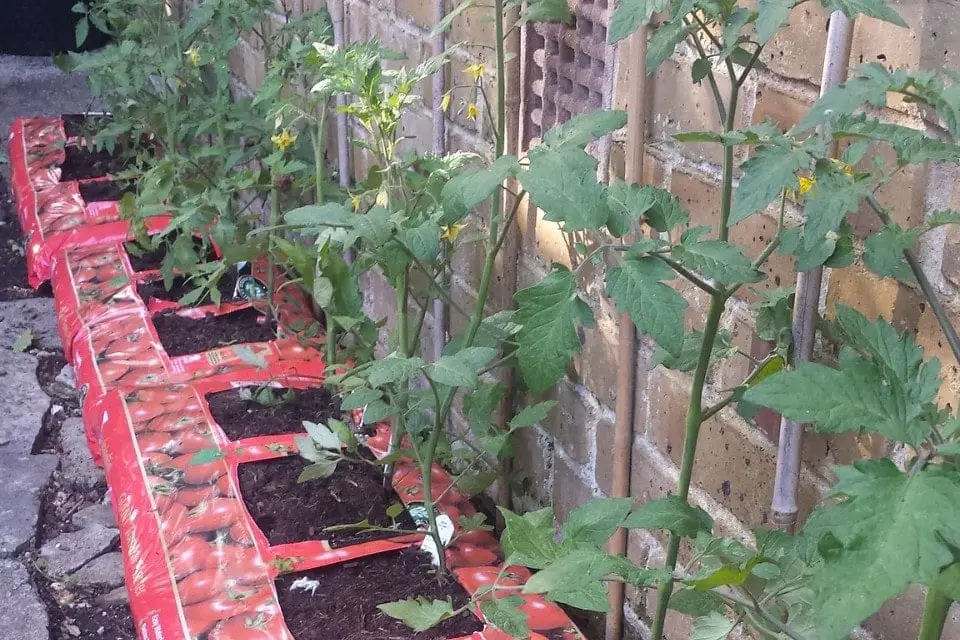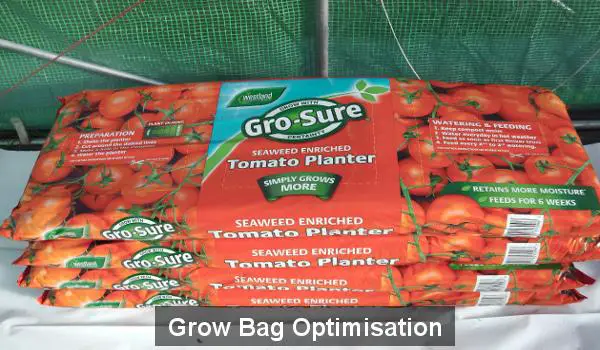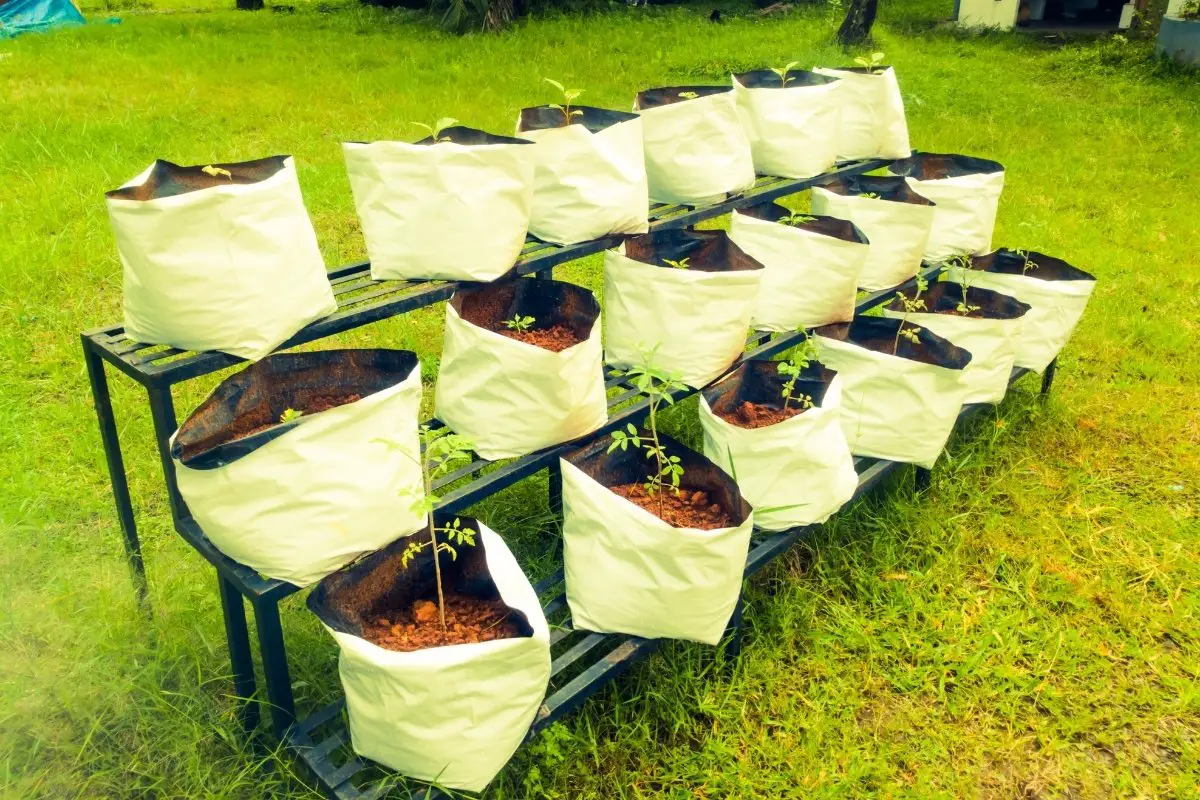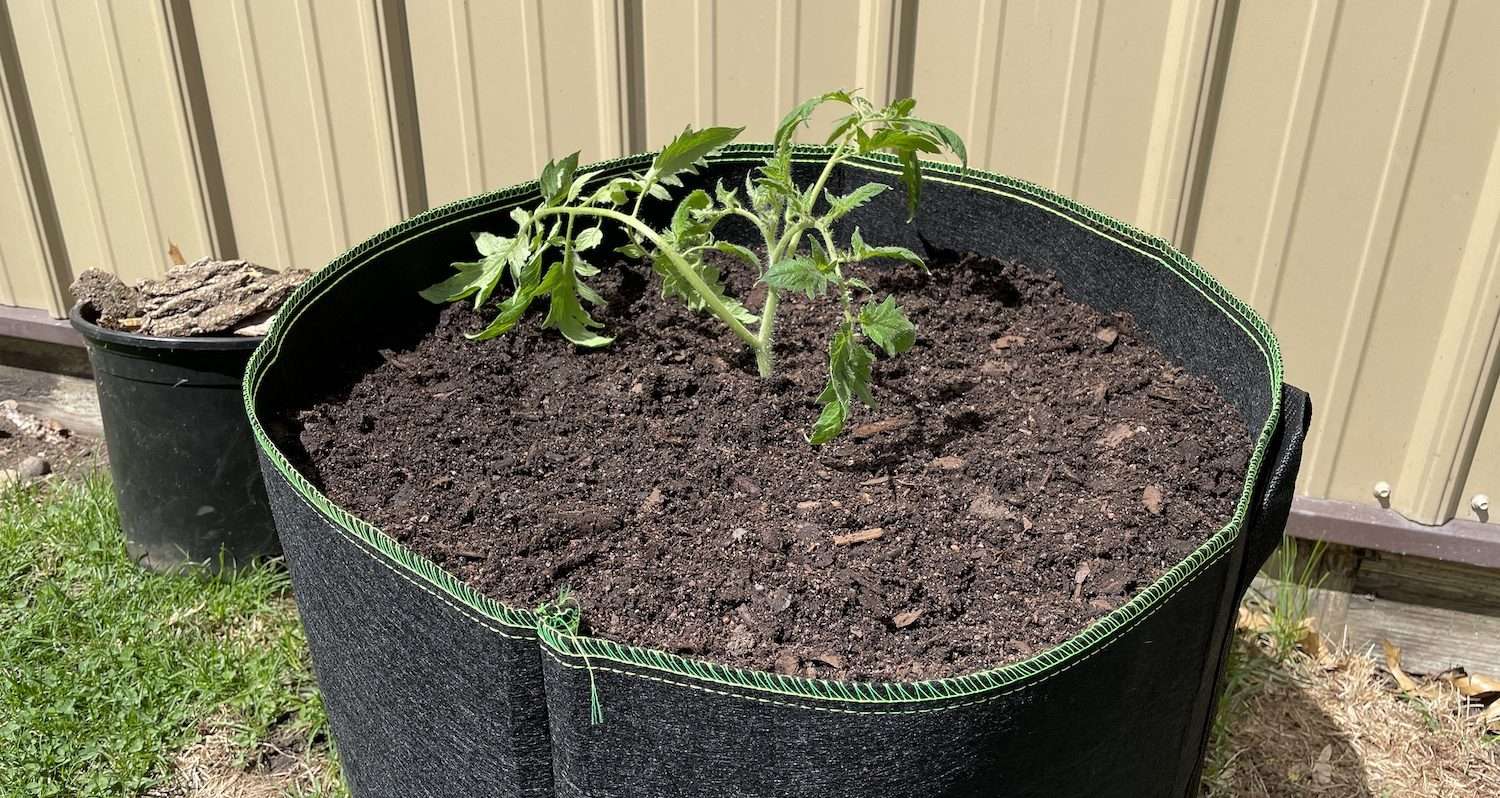Choosing the Right Grow Bag for Your Tomato Plants
When it comes to selecting the ideal grow bag for your tomato plants, there are several factors to consider. The size of the grow bag is crucial, as it will determine the amount of soil and root space available to your plants. A general rule of thumb is to choose a grow bag that is at least 5-7 gallons in size, as this will provide enough room for the roots of the plant to grow and for the soil to retain moisture.
The material of the grow bag is also important, as it will affect the durability and breathability of the bag. Look for grow bags made from high-quality, BPA-free materials that are designed to withstand the elements and provide optimal air circulation. Some popular brands, such as Smart Pots and Grow Bag, offer high-quality grow bags that are specifically designed for growing tomatoes.
Durability is another key factor to consider when selecting a grow bag. Look for bags that are made with reinforced stitching and durable materials that can withstand the weight of the soil and plants. A good grow bag should be able to last for several seasons, making it a worthwhile investment for any gardener.
Finally, consider the color and design of the grow bag. While this may seem like a minor consideration, the color of the bag can actually affect the temperature of the soil. Dark-colored bags can absorb heat, while light-colored bags can reflect it. If you live in a hot climate, a light-colored bag may be a better choice to help keep the soil cool.
By considering these factors, you can choose the perfect grow bag for your tomato plants and set yourself up for a successful harvest. Whether you’re a seasoned gardener or just starting out, using a high-quality grow bag can make all the difference in the health and productivity of your plants.
Choosing the Right Grow Bag for Your Tomato Plants
When it comes to selecting the ideal grow bag for your tomato plants, there are several factors to consider. The size of the grow bag is crucial, as it will determine the amount of soil and root space available to your plants. A general rule of thumb is to choose a grow bag that is at least 5-7 gallons in size, as this will provide enough room for the roots of the plant to grow and for the soil to retain moisture.
The material of the grow bag is also important, as it will affect the durability and breathability of the bag. Look for grow bags made from high-quality, BPA-free materials that are designed to withstand the elements and provide optimal air circulation. Some popular brands, such as Smart Pots and Grow Bag, offer high-quality grow bags that are specifically designed for growing tomatoes.
Durability is another key factor to consider when selecting a grow bag. Look for bags that are made with reinforced stitching and durable materials that can withstand the weight of the soil and plants. A good grow bag should be able to last for several seasons, making it a worthwhile investment for any gardener.
When shopping for a grow bag, consider the specific needs of your tomato plants. If you’re looking to plant tomatoes in grow bags, you’ll want to choose a bag that is specifically designed for this purpose. Look for bags with features such as built-in water reservoirs and aeration systems, which can help to promote healthy root growth and prevent waterlogged soil.
Some popular options for grow bags include the Smart Pot 5-Gallon Grow Bag and the Grow Bag 7-Gallon Tomato Planter. These bags are designed to provide optimal growing conditions for tomato plants and are made from high-quality, durable materials. By choosing the right grow bag for your tomato plants, you can help to ensure a healthy and productive harvest.
Preparing Your Grow Bag for Tomato Planting
Before you can start planting tomatoes in your grow bag, you’ll need to prepare the soil and the bag itself. This is a crucial step in ensuring the health and productivity of your plants. Start by adding a layer of compost to the bottom of the grow bag. This will help to improve the soil’s fertility and drainage, and provide a nutrient-rich environment for your tomato plants to grow.
Next, add a balanced fertilizer to the soil, following the manufacturer’s instructions for application rates. This will provide your tomato plants with the necessary nutrients for healthy growth and fruit production. You can also add other amendments, such as bone meal or alfalfa meal, to provide additional nutrients and improve the soil’s structure.
Once you’ve added the compost and fertilizer, arrange the soil in the grow bag to create a smooth, even surface. Make sure the soil is not too compacted, as this can prevent proper drainage and aeration. You can use a garden fork or trowel to gently loosen the soil and create a more porous structure.
Finally, water the soil thoroughly to settle the compost and fertilizer. Make sure the soil is moist but not waterlogged, as this can cause the roots of the tomato plants to rot. By following these steps, you can create a well-prepared grow bag that will provide your tomato plants with the best possible start in life.
When preparing your grow bag for tomato planting, it’s also important to consider the specific needs of your plants. For example, if you’re planting indeterminate tomato varieties, you may need to provide additional support, such as a trellis or cage, to help the plants grow upright. By taking the time to properly prepare your grow bag, you can help to ensure a healthy and productive harvest.
How to Plant Tomatoes in Grow Bags for Maximum Yield
Planting tomatoes in grow bags can be a bit tricky, but with the right techniques, you can achieve a bountiful harvest. Here’s a step-by-step guide on how to plant tomatoes in grow bags for maximum yield:
Step 1: Choose a healthy tomato seedling with two sets of leaves. Gently remove the seedling from its container and inspect the roots. If the roots are circling or growing out of the container, gently tease them apart with your fingers.
Step 2: Plant the seedling in the grow bag, burying it up to its first true leaves. Make sure the soil is moist but not waterlogged, and gently firm the soil around the roots to prevent air pockets.
Step 3: Water the seedling thoroughly, making sure the soil is moist but not waterlogged. You can also add a layer of mulch around the seedling to retain moisture and suppress weeds.
Step 4: Provide support for the seedling as it grows. You can use tomato cages, trellises, or stakes to keep the plant upright and promote healthy growth.
Tips for Planting Tomatoes in Grow Bags:
Spacing: Plant tomatoes in grow bags at least 18-24 inches apart to prevent overcrowding and promote healthy growth.
Soil Depth: Plant tomatoes in grow bags at a depth of 1-2 inches, depending on the variety. Make sure the soil is moist but not waterlogged.
Watering: Water tomatoes in grow bags regularly, making sure the soil is moist but not waterlogged. Avoid getting water on the leaves to prevent disease.
By following these steps and tips, you can successfully plant tomatoes in grow bags and enjoy a bountiful harvest. Remember to provide regular care and maintenance, including watering, fertilizing, and pruning, to promote healthy growth and fruit production.
Tips for Caring for Tomato Plants in Grow Bags
Caring for tomato plants in grow bags requires regular monitoring and maintenance to ensure optimal plant health. Here are some tips to help you keep your tomato plants thriving:
Watering: Tomatoes in grow bags need consistent moisture, especially when they’re producing fruit. Check the soil daily, and water when the top inch of soil feels dry to the touch. Avoid getting water on the leaves to prevent disease.
Fertilizing: Feed your tomato plants with a balanced fertilizer once a month. You can also add a high-phosphorus fertilizer to promote fruiting. Follow the manufacturer’s instructions for application rates.
Pruning: Prune your tomato plants regularly to promote healthy growth and fruit production. Remove any weak or spindly growth, and trim back the tips of the branches to encourage bushy growth.
Pest Management: Keep an eye out for pests like aphids, whiteflies, and hornworms. Use organic pest control methods whenever possible, such as neem oil or insecticidal soap.
Support: Provide support for your tomato plants as they grow. Use tomato cages, trellises, or stakes to keep the plants upright and promote healthy growth.
Monitoring: Regularly monitor your tomato plants for signs of disease or pests. Check for yellowing leaves, black spots, or white powdery patches on the leaves. Take action immediately if you notice any problems.
By following these tips, you can keep your tomato plants in grow bags healthy and thriving. Remember to provide regular care and maintenance, and you’ll be enjoying a bountiful harvest in no time.
Common Mistakes to Avoid When Growing Tomatoes in Grow Bags
While growing tomatoes in grow bags can be a rewarding experience, there are some common mistakes to avoid in order to ensure a successful harvest. Here are some of the most common mistakes to watch out for:
Overwatering: One of the most common mistakes when growing tomatoes in grow bags is overwatering. This can lead to waterlogged soil, root rot, and other problems. To avoid this, make sure to check the soil daily and only water when the top inch of soil feels dry to the touch.
Underwatering: On the other hand, underwatering can also be a problem. Tomatoes need consistent moisture, especially when they’re producing fruit. Make sure to water your plants regularly, but avoid getting water on the leaves to prevent disease.
Inadequate Support: Tomatoes need support as they grow, especially when they’re producing fruit. Make sure to provide a trellis or cage for your plants to climb on, and prune them regularly to promote healthy growth.
Insufficient Light: Tomatoes need full sun to produce well, so make sure to place your grow bags in a location that gets at least 6 hours of direct sunlight per day.
Poor Soil Quality: The quality of your soil can make a big difference in the health and productivity of your tomato plants. Make sure to use a high-quality potting mix that is specifically designed for containers, and add organic matter like compost or manure to improve soil fertility.
By avoiding these common mistakes, you can help ensure a successful harvest when growing tomatoes in grow bags. Remember to monitor your plants regularly and take action quickly if you notice any problems.
Harvesting Tomatoes from Grow Bags: Timing and Techniques
Harvesting tomatoes from grow bags can be a bit tricky, but with the right techniques, you can enjoy a bountiful harvest. Here are some tips to help you determine when your tomatoes are ready to harvest:
Visual Cues: Check your tomatoes regularly for visual cues that indicate they are ready to harvest. Look for tomatoes that are fully red, yellow, or orange, depending on the variety. Avoid squeezing the tomatoes, as this can damage the fruit.
Checking Ripeness: To check the ripeness of your tomatoes, gently twist the fruit. If it comes off the plant easily, it’s ready to harvest. If not, wait a few more days and check again.
Harvesting Techniques: When harvesting tomatoes from grow bags, use a pair of scissors or a sharp knife to cut the fruit from the plant. Avoid pulling the tomatoes off the plant, as this can damage the stem and reduce future yields.
Timing: The timing of your harvest will depend on the variety of tomato you are growing. Generally, cherry tomatoes and patio tomatoes are ready to harvest within 60 days of planting, while larger varieties may take up to 90 days.
By following these tips, you can enjoy a successful harvest when growing tomatoes in grow bags. Remember to harvest your tomatoes regularly to encourage the plant to produce more fruit.
Conclusion: Enjoy a Bountiful Harvest with Grow Bags
Growing tomatoes in grow bags is a great way to enjoy a bountiful harvest, even with limited space. By following the tips and guidelines outlined in this article, you can successfully plant tomatoes in grow bags and enjoy a delicious and rewarding harvest.
Remember to choose the right grow bag for your tomato plants, prepare the soil properly, and provide regular care and maintenance. With a little practice and patience, you can enjoy a successful harvest and enjoy the many benefits of growing tomatoes in grow bags.
So why not give it a try? Plant tomatoes in grow bags today and start enjoying the many benefits of container gardening. With the right techniques and a little bit of care, you can enjoy a bountiful harvest and savor the delicious taste of homegrown tomatoes.







